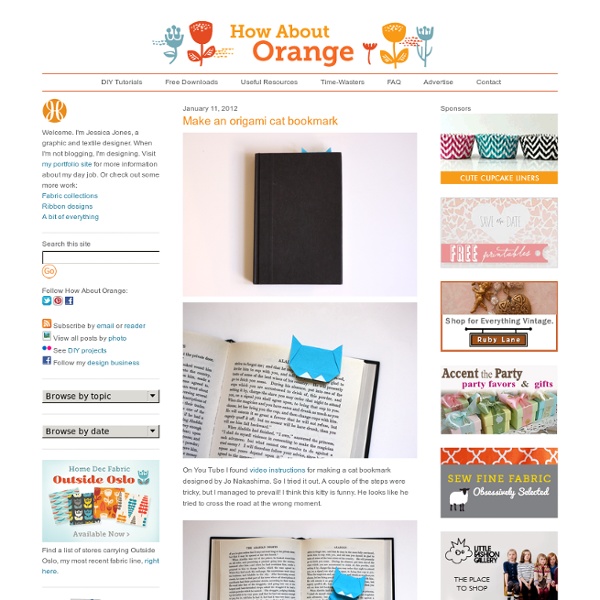Make an origami cat bookmark
On You Tube I found video instructions for making a cat bookmark designed by Jo Nakashima. So I tried it out. A couple of the steps were tricky, but I managed to prevail! I think this kitty is funny. He looks like he tried to cross the road at the wrong moment.
Les Origami de Senbazuru - L'origami facile
Videoclips musicais: uma nova forma de arte
Quando se fala da caixa mágica que mudou o mundo todos pensam na televisão. Mudou o mundo, de facto: alterou o nosso modo de vida, a nossa percepção do que nos rodeia, aproximou as pessoas. Há quem diga que as afastou... Mas o que é curioso e ao mesmo tempo irónico é que, na verdade, durante muito tempo a televisão não trouxe nada de novo. Pensemos bem: filmes, documentários, noticiários, programas de divertimento, etc. tudo isso já existia na rádio, no cinema, no teatro, etc. A televisão tinha imagem mas isso era, digo eu, apenas uma curiosidade... Uma das poucas novidades que a televisão trouxe foi o videoclip musical, um meio de expressão artística plena de potencialidades. Somente a partir dos anos 80' o videoclip se popularizou e disseminou, em grande parte devido à acção da famosa MTv. Thriller - Michael Jackson Bad - Michael Jackson War song - Culture Club Curta a página da obvious no Facebook Os melhores artigos por e-mail seven
Muito Interessante
November 8th, 2010 Vários cientistas andaram a investigar e descobrir quais os 10 factores que mais influenciam aquilo que as pessoas consideram bonito ou não. Assim a lista de factores que influenciam a tua real beleza são:
T H E T O Y M A K E R
Coffee Filter Flowers and Video Tutorial
Hello sweet friends! It has been inexcusably long since I have posted. I know. But I do have legitimate reasoning. The kiddos got sick. The kiddos got ME sick. Been preparing for an upcoming gala next weekend. I have had 101 appointments and hence...no access to blog land. We actually have been going through a lot of personal stuff with our oldest daughter. But GOOD NEWS...I am going to be sharing all the elements of this DIY Tablescape I have been working on. Do you remember last year's table? So here we go with the first part of Gala Tablescape 2012... My idea was to have a bunch of flowers...I mean A LOT...all over my table. I think I am the last person to get on the coffee filter flower train. And it's easy! Everyone chic scream for easy! First I dyed them. I experimented with tea, food coloring, washable markers, and watered down acrylic paint. The soft colors of these are so lovely. Here they are folded twice into cones and cut with a scalloped edge all ready to make the flowers. P.S.
Related:
Related:



